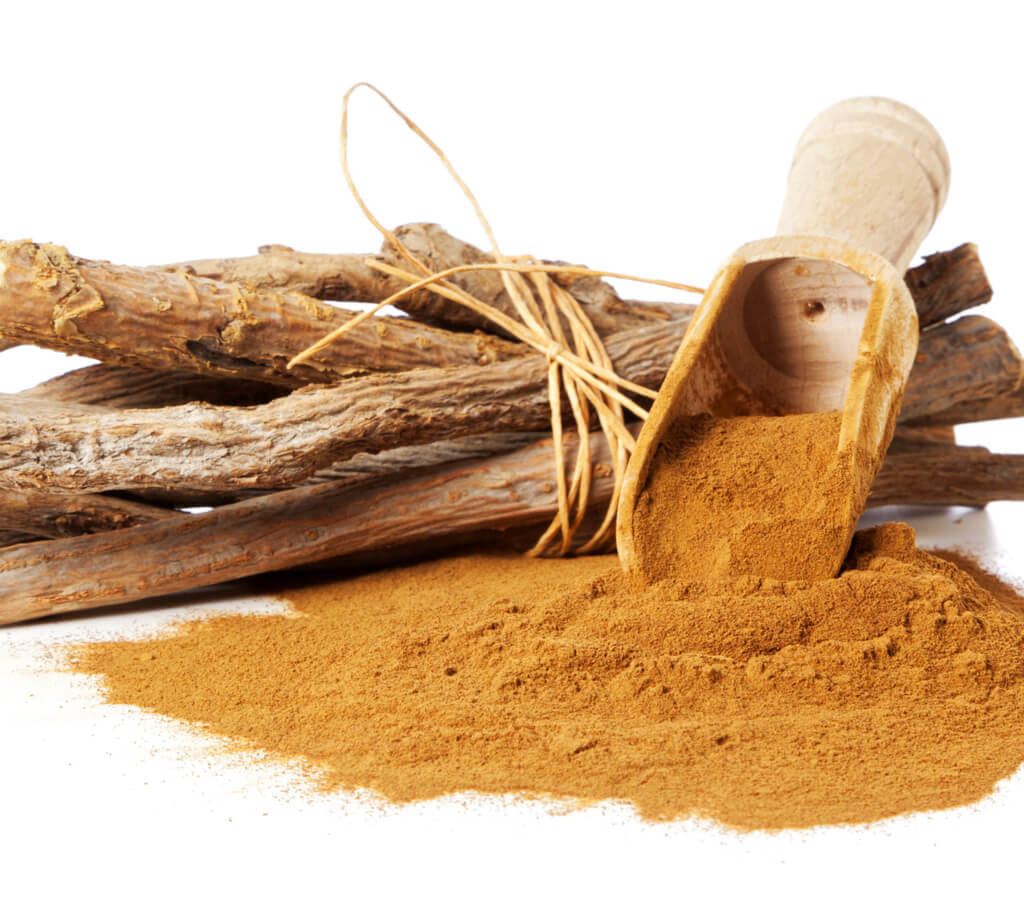Licorice root, an herb that has been a staple in Eastern medicine for centuries, is one of many supplements that can help you cleanse because it protects the digestive system and increases energy. You can consume licorice for detox in a few easy ways; make it into a delicious tea, take it as a supplement, or mix it into other foods.
The best part is it adds sweetness to your detox diet when most other sweets must be avoided.
What is Licorice
Licorice is an herb native to Asia, Africa, and Europe. The root, specifically, is often used for medicinal purposes and contains the sweet flavor found in licorice extract.
It’s not to be confused with the licorice candy we all know, as most licorice candy doesn’t contain any licorice at all, but rather, anise oil though the flavors are similar.
Licorice root is primarily used as a dietary or medicinal supplement because it works so well to relieve digestive issues, coughs, and sore throats. It can sometimes be used as a topical treatment to even skin tones.
How Does Licorice Help Detox
Licorice has a history of use for detox because it takes care of the digestive system by reducing acidity in the stomach and inflammation throughout.
Licorice helps your body naturally flush out broken-down toxins more quickly by acting as a laxative and aiding flow through the liver. It can be used along with other detox herbs and spices to increase their effectiveness or on its own for the described benefits.
In addition to assisting the detox process, licorice can make detox symptoms less severe. It is known to reduce mental and physical stress, help with sleep, and increase energy.
How Much Licorice to Detox
The dosage of licorice root for your detox depends on your body more than anything. Don’t consume less than five grams a day for best results, but you could have up to 15 grams a day if you’re trying hard to push your detox along.
Make sure to listen to your body and don’t exceed dosage recommendations on the packaging. Always speak to your primary care provider before starting a detox or new supplements, especially if you take medication.
Remember, licorice is a mild laxative, so if you start consuming large amounts and notice stomach problems or other adverse effects, dial down your dosage to a more comfortable point.
Licorice Detox Tea Recipe
You can make a simple licorice tea by steeping one tablespoon of licorice root shavings in one cup of boiling water. Licorice root is very sweet, so you won’t need to add sugar, an ingredient to avoid while detoxing.
If you want to spice it up a little, you can add a dash of cinnamon or cloves to cut through the intense sweetness of the licorice.
Or, you could add peppermint leaves to compliment the licorice’s slight notes of peppermint flavor. Steep 1/2 tablespoon of licorice root and 1/8 cup dried peppermint leaves in 1 1/2 cups water and stir with a cinnamon stick for a flavorful tea that will aid your detox and keep you energized!
Potential Licorice Side Effects
Licorice root contains glycyrrhizin, a chemical that can be dangerous when you consume too much. Taking more than 2 milligrams of pure glycyrrhizin every day for weeks can have side effects as severe as a heart attack.
Especially use caution when taking licorice containing glycyrrhizin if you struggle with high blood pressure, heart disease, or kidney disease.
Fortunately, glycyrrhizin is sometimes removed from licorice products. If your licorice products contain no more than 10% glycyrrhizin, you should be safe consuming an average amount for a few months at a time.
All licorice products consumed in excess can have adverse effects with potassium, estrogen, loop diuretics, and any medications that are altered by the liver. To be safe, consult with your doctor before upping your licorice intake.

